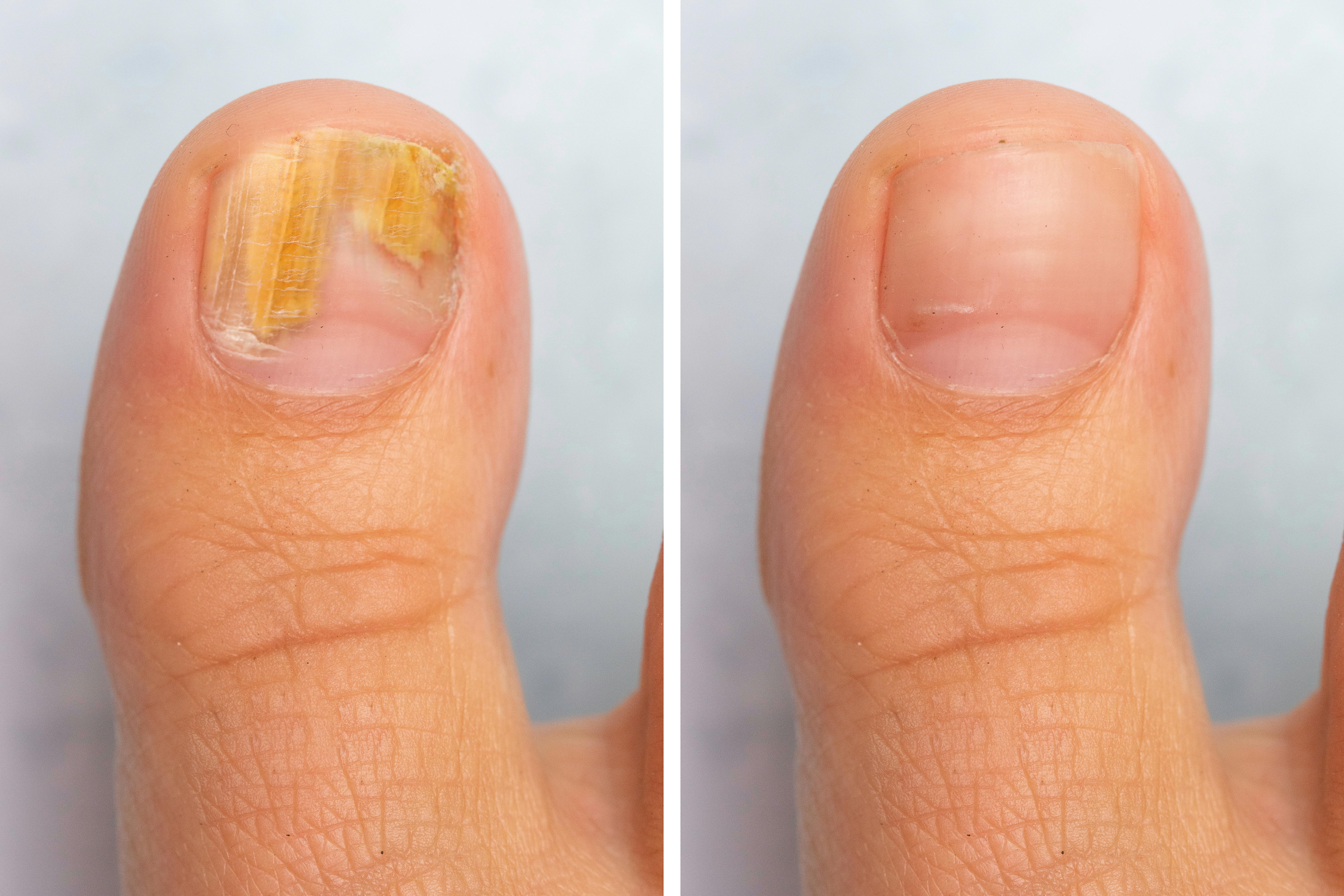Fungal Nails and Tinea

Fungal infections of the nails and skin are very common in Sydney’s hot and humid climate. People will often present to us feeling embarrassed due to the unsightly appearance of their discoloured nails.
Fungal infections are caused by Fungal Spores that are transferred by air, dirt and water. Your feet are commonly affected as shoes provide a perfect dark and humid environment for the fungus to live. Fungal infections in the skin are called Tinea, and this is very easily contracted in communal places, such as swimming pools or gym showers. Your nails can become affected after being damaged, or by having a longstanding and untreated tinea infection in the skin.
FUNGAL NAILS
A fungal nail can appear yellow, brown or white in colour and can be thickened, brittle or crumbly. The fungal infection will cause the nail to lift from the nail bed. Without treatment, the fungus will remain in the nail and continue to develop over time, eventually causing the entire nail to be infected.
We regularly treat people who have tried to cover their nails with nail polish to hide the problem, but unfortunately, this is not a great solution. By hiding the fungal nail, you will be oblivious to the damage the fungus is causing underneath, hence delaying treatment until the problem is so severe it will take a long time for the infection to clear.
We use a two-pronged approach when treating stubborn fungal nail infections - firstly we reduce the thickness of the nail and secondly we will recommend an anti-fungal treatment that you can perform at home. We find this is the most successful way to permanently clear your infected nail. In hard to clear cases, or if your fungal infection is very severe, we may send you for pathology testing and refer you to your GP or dermatologist for oral antifungal medication.
TINEA
Tinea, or Athlete’s Foot, as it is sometimes called is very common, and chronic cases are often confused with dry skin. What begins as cracking, redness and itching between your toes, can progress to peeling, flaking and dryness predominantly on the soles of your feet.
A tinea infection will only get worse if you try and treat it with moisturiser. Your Podiatrist is best placed to give you an opinion on the condition of your skin, and can recommend appropriate creams to use. If it is not clear what is causing your skin condition, we will recommend pathology testing and/or referral to a dermatologist for specialised treatment if necessary.